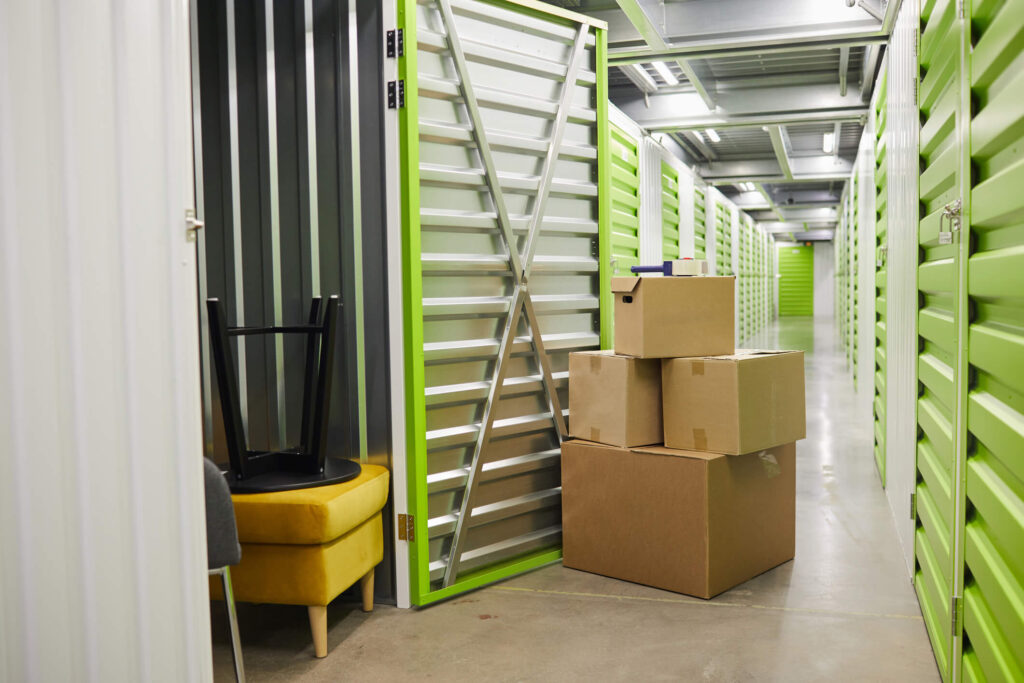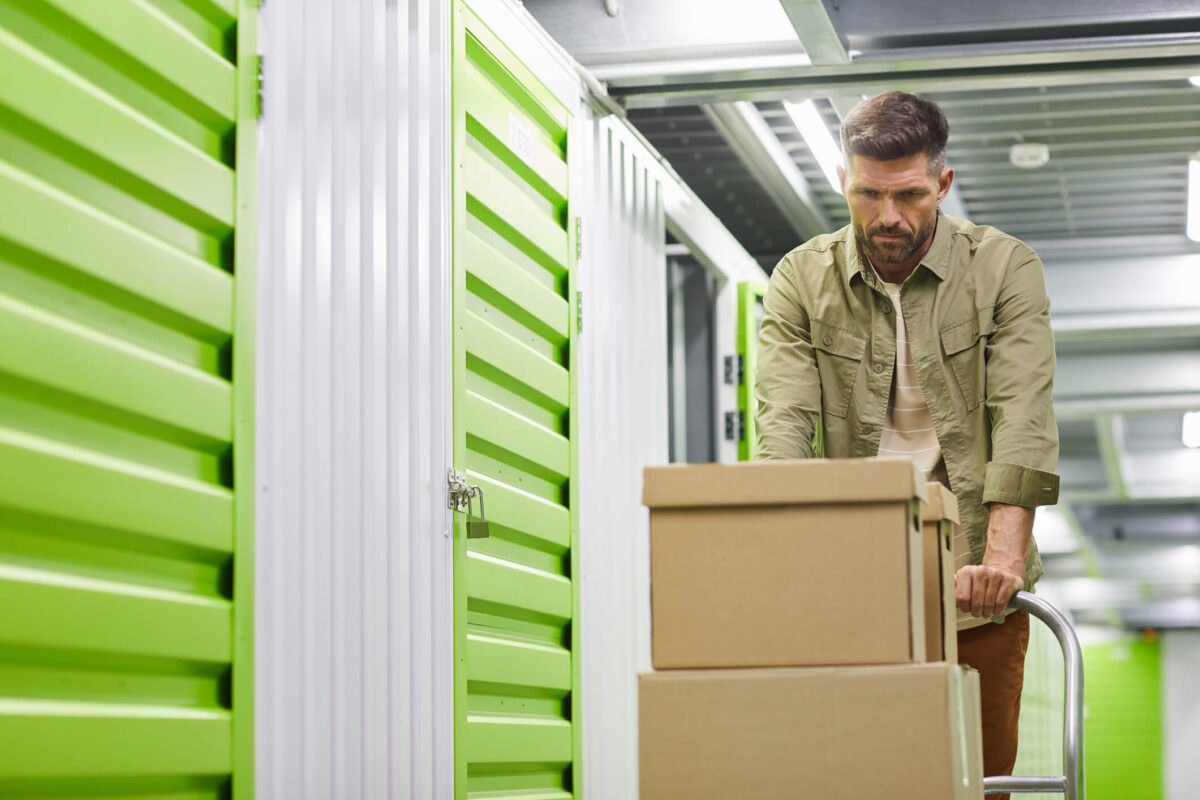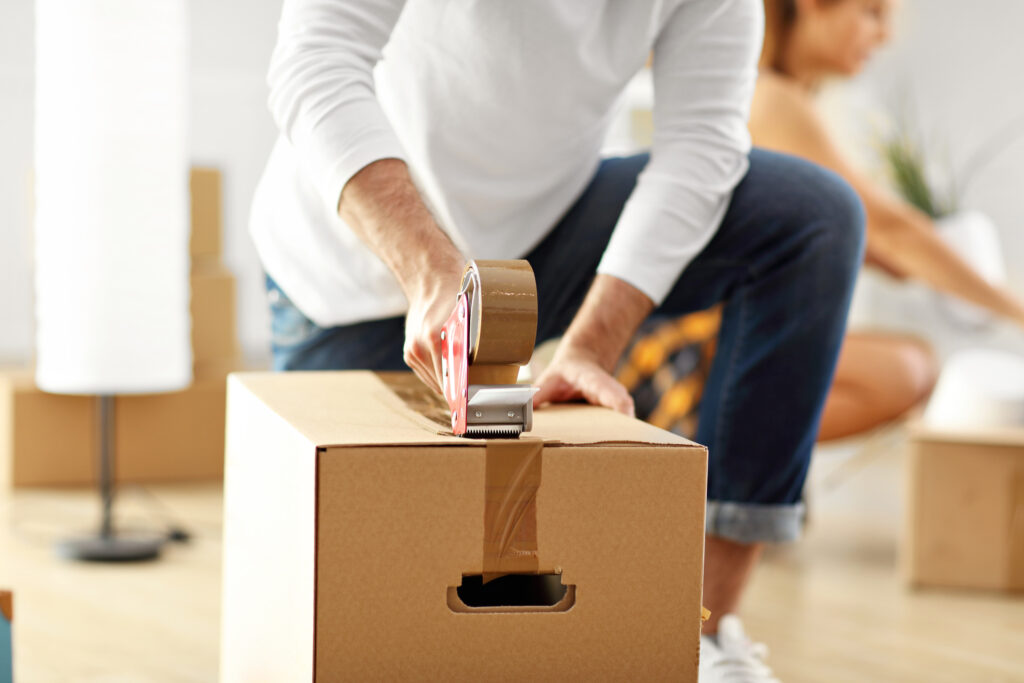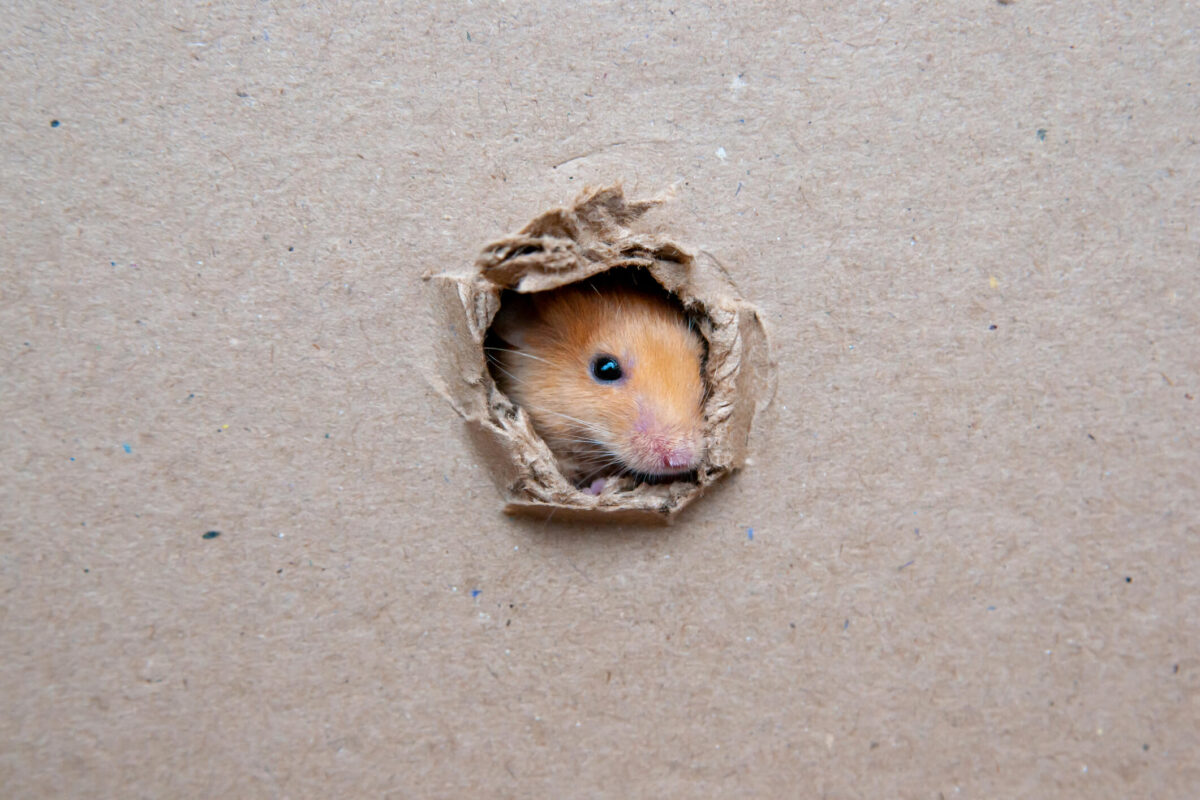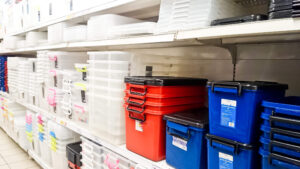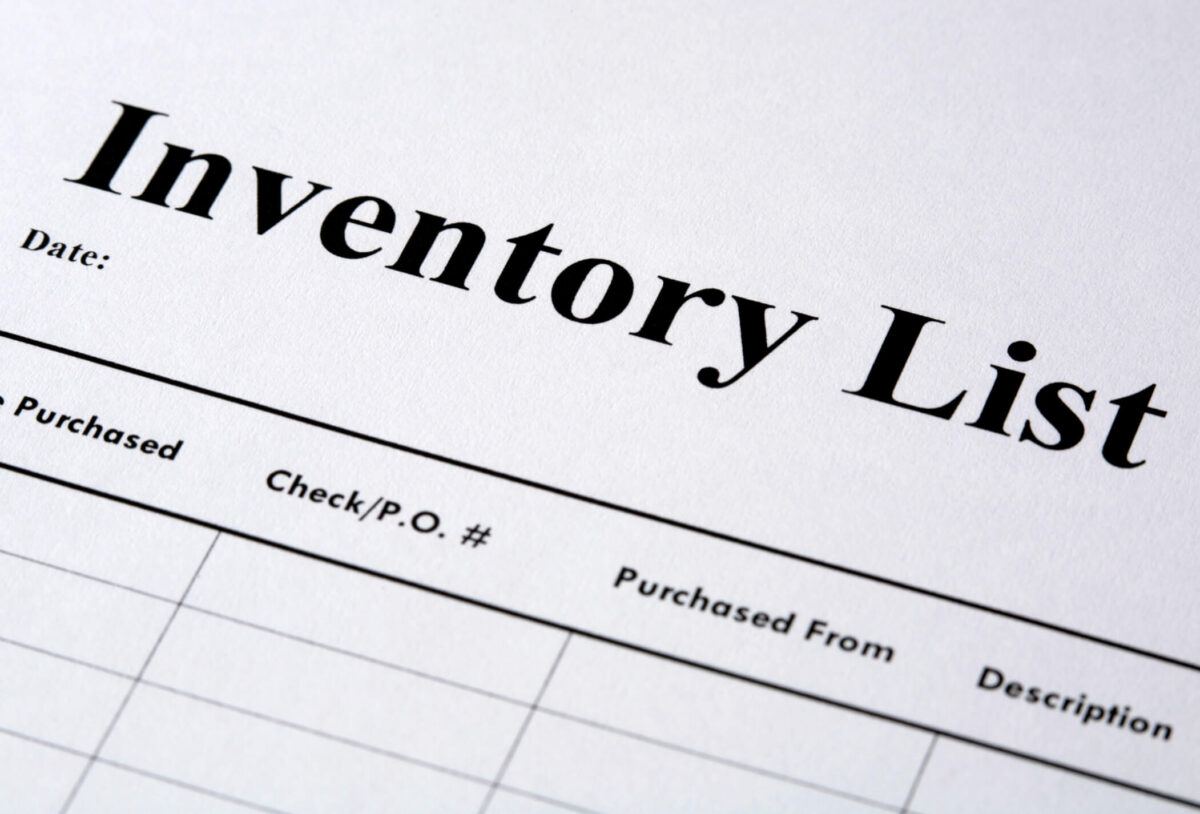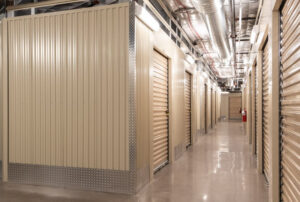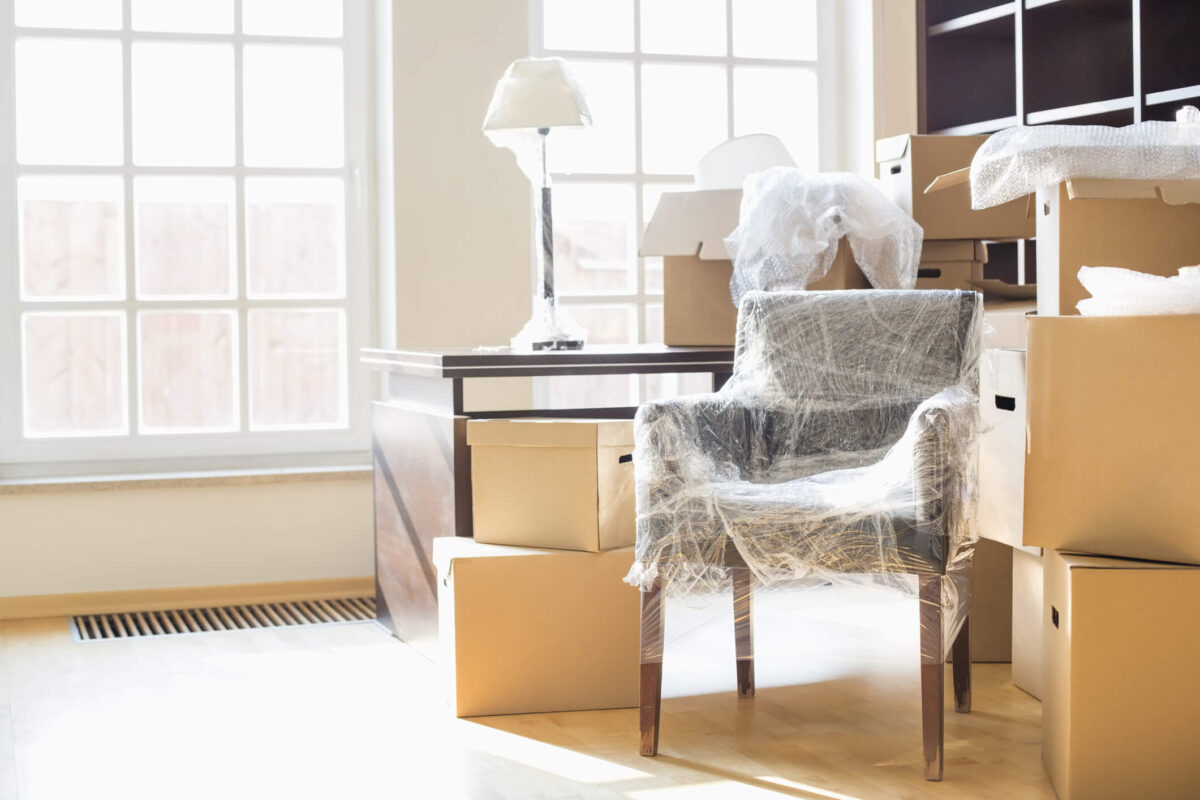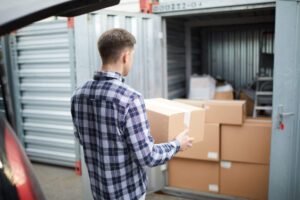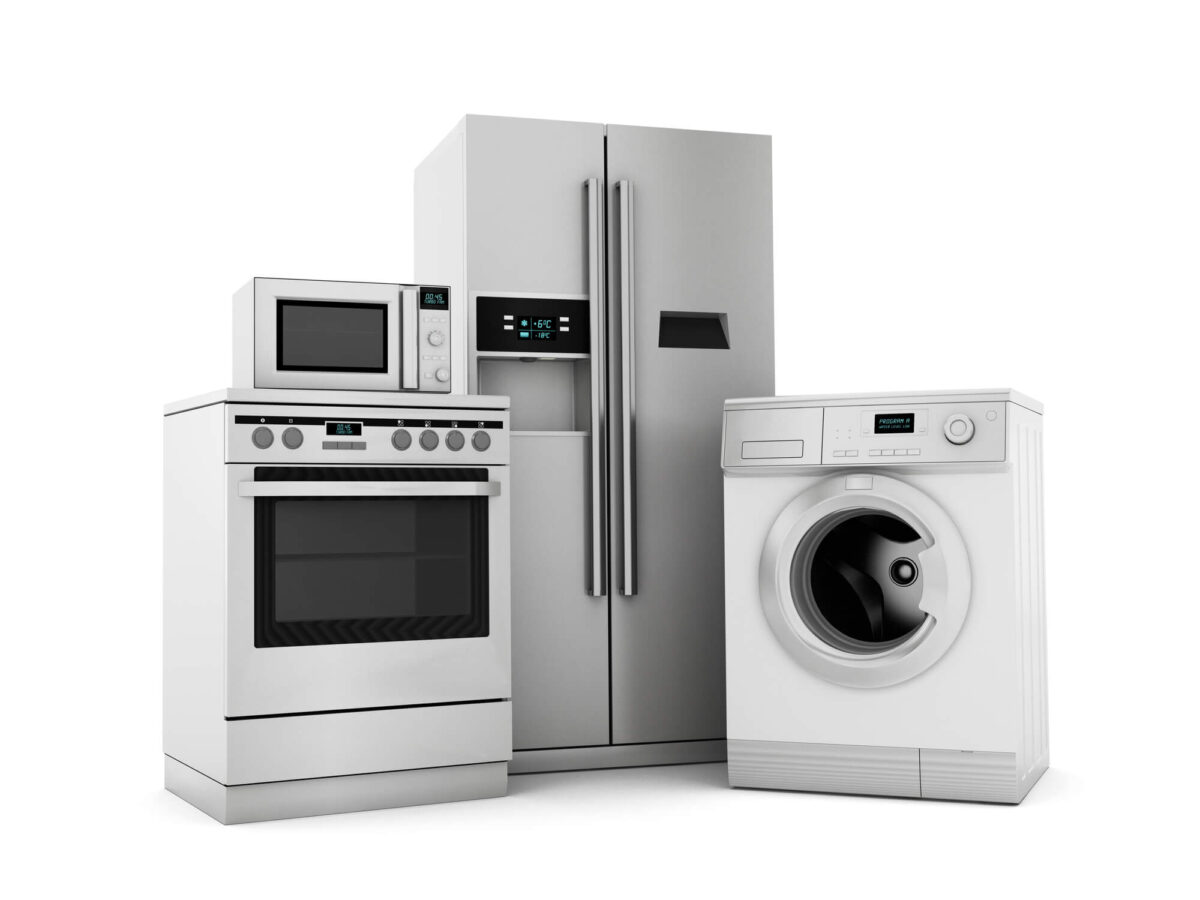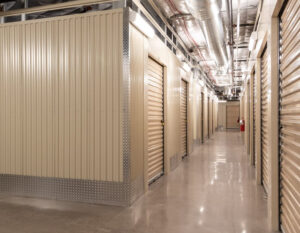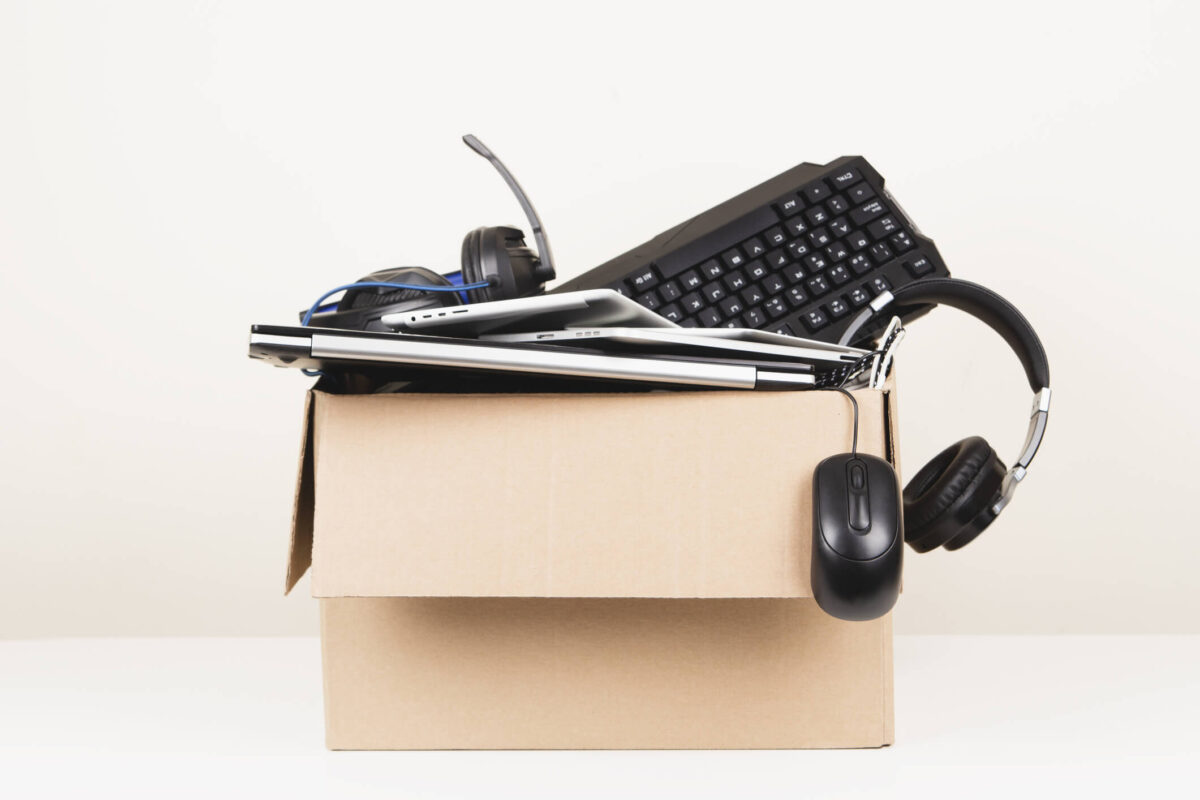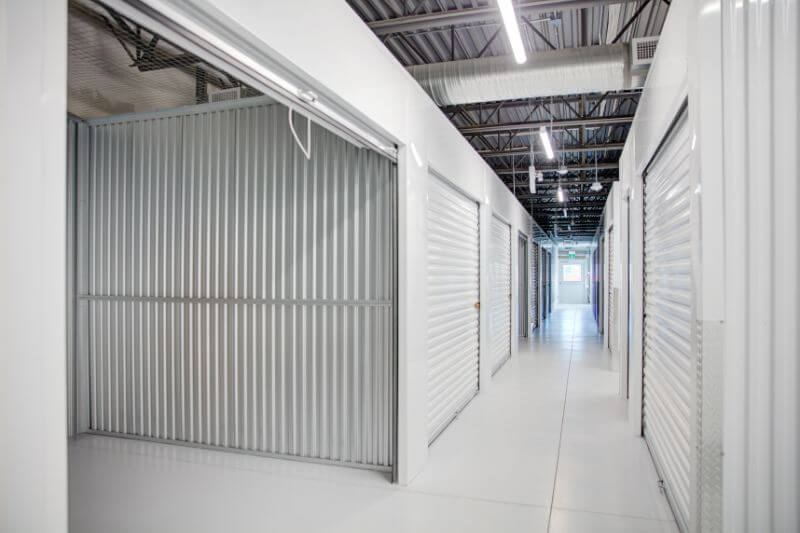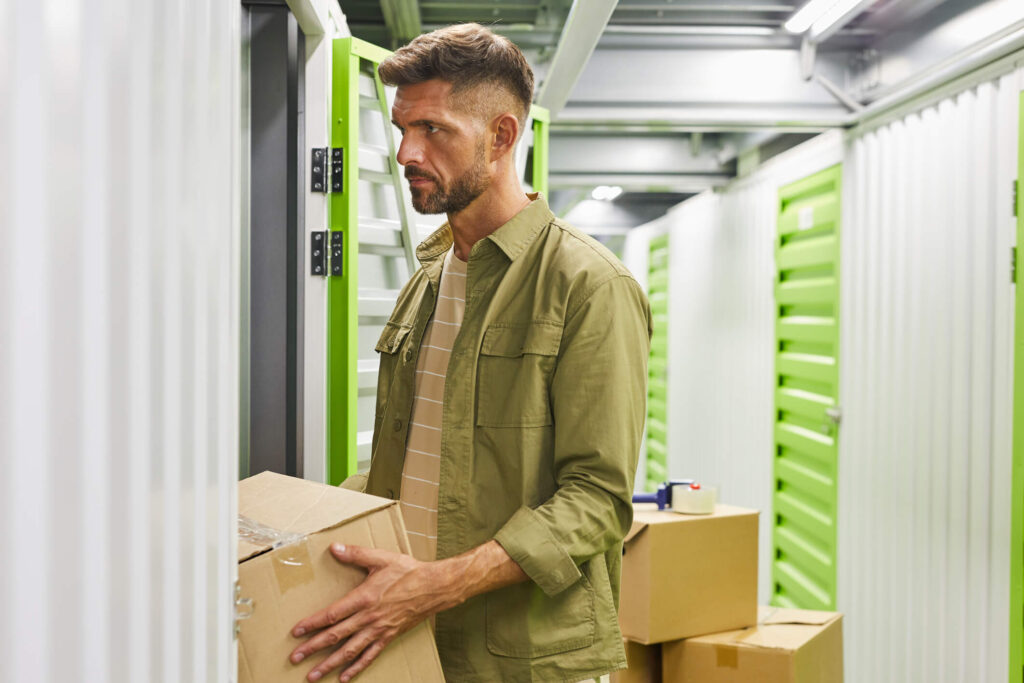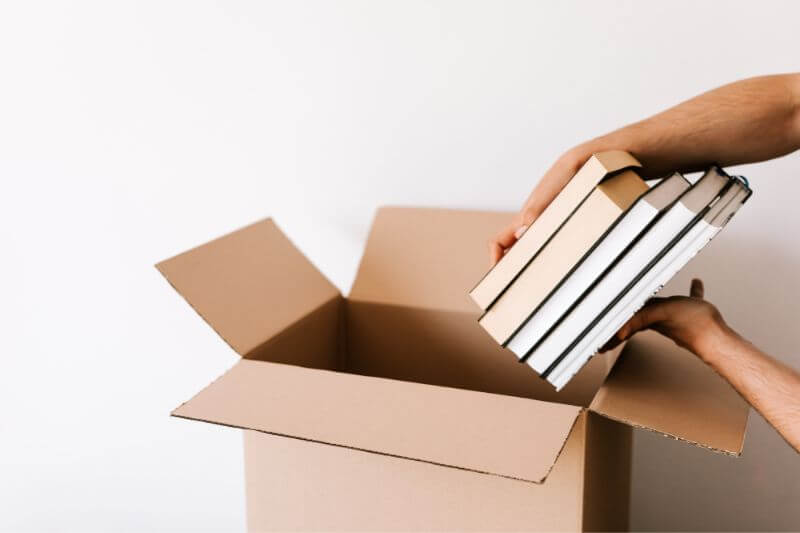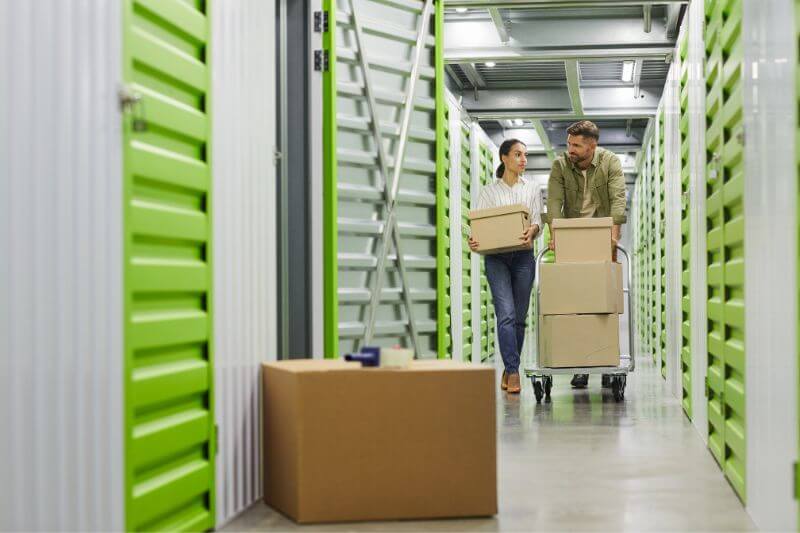Why you need a climate controlled storage solution in Scottsdale, Arizona? Imagine having a secure sanctuary to protect your valuables from Scottsdale’s extreme weather. Scottsdale’s climate-controlled storage provides a refuge that guarantees your priceless belongings stay in top shape. Climate management is essential to maintaining the durability and worth of antique furniture and sensitive documents.
Scottsdale, Arizona, is distinguished by its vibrant culture, breathtaking desert landscapes, and sunny weather. Nevertheless, the arid climate can be particularly harsh when storing valuable items. Whether you are a resident seeking to store personal belongings or a business proprietor seeking to safeguard inventory, a climate-controlled storage solution is indispensable in this region.
Overview of Climate Controlled Storage
Climate-controlled storage is a specialized facility designed to maintain a controlled environment with consistent temperature and humidity, making it ideal for storing sensitive or valuable items. Advanced systems are installed to ensure optimal conditions for items like cars, appliances, and furniture, safeguarding them from extreme heat, cold, and moisture. This type of storage benefits vehicle storage, protecting cars and motorcycles from deterioration caused by temperature fluctuations. It also helps prevent warping, rust, and damage to other household items and materials. When choosing climate-controlled storage, consider the specific needs of your items, the storage options available, and the likelihood of exposure to damaging environmental factors. Explore the rates, supplies, and services offered, and weigh the value of protecting your possessions. Climate-controlled units offer reliable solutions to safeguard your belongings from environmental harm, whether for personal or business use.
Key Characteristics of Climate-Controlled Storage Temperature Control
Typically, climate-controlled storage facilities maintain a consistent temperature between 55°F and 85°F. This consistent temperature is instrumental in preventing the damaging effects of extreme heat or cold, which can cause items such as wooden furniture, electronics, and warping artwork to fracture or fade.
Regulation of Humidity
Climate-controlled units regulate temperature and humidity levels within the unit. This is especially crucial for items susceptible to moisture fluctuations, including musical instruments, paper documents, and leather products. Maintaining a consistent humidity level prevents mold, mildew, and corrosion from forming in your possessions.
Protection from Pests and Dust
Climate-controlled units are frequently more tightly sealed than conventional storage units, which helps prevent the entry of dust, grime, pests and rodents. This additional layer of protection guarantees that your stowed items remain pristine and clean.
Enhanced Security
Numerous climate-controlled storage facilities implement enhanced security protocols, including alarms, access control systems, and 24/7 surveillance. These features provide an additional layer of security by safeguarding your possessions from abduction or damage.
Who should utilize climate-controlled storage?
Collectors and Enthusiasts
Climate-controlled storage is advantageous for individuals who accumulate uncommon items, antiques, wine, or artwork to guarantee that these valuable possessions are maintained optimally.
Entrepreneurs
Businesses depend on climate-controlled storage to maintain the quality of their products and prevent damage to sensitive inventory, including electronics, furniture, and critical documents.
Individuals who are Homeowners
The stable environment provided by climate-controlled units is advantageous for homeowners who require storage for seasonal items (e.g., holiday decorations, apparel) or delicate furniture (e.g., wood, leather).
Individuals who are either Relocating or Renovating
A climate-controlled unit can store furniture, documents, and fragile items while renovating or transitioning between residences. This will assure you that they are safe until you are ready to reintroduce them into your home.
Advantages of Climate-Controlled Storage
Ensures the Longevity of Items
Climate-controlled storage safeguards valuable or fragile items from extreme temperatures and humidity, preserving their integrity and condition over time.
Stops the Degradation of Sensitive Materials
Electronics, leather, wood, and paper are particularly susceptible to environmental factors. A climate-controlled unit safeguards these items from moisture, heat, and humidity.
Mental Tranquility
Ensuring that your most valuable possessions are safeguarded from the elements and stored in a secure, controlled environment provides a sense of security that your possessions are in good hands.
Benefits of Climate Control in Extreme Temperatures
Extreme temperatures can significantly impact the longevity and condition of various items, whether excessively hot or frigid. Climate-controlled storage offers a solution by regulating the environment, thereby safeguarding stowed items from the detrimental effects of extreme temperatures. The primary advantages of climate control in extreme conditions are as follows:
Offers Protection from High Temperatures
Scottsdale’s summers are renowned for their extreme heat, frequently exceeding 100°F. High temperatures can damage sensitive objects such as furniture, electronics, artwork, and antiques. A climate-controlled storage unit maintains a consistent temperature, typically between 55°F and 85°F, safeguarding your items from heat-related destruction.
Prevents Humidity Damage
Although Scottsdale’s dry climate provides some respite from humidity, temperature fluctuations can result in moisture pockets. This abrupt change in moisture levels may develop mold, mildew, and corrosion on leather, books, paper documents, and musical instruments. Climate-controlled storage units maintain consistent humidity levels, prevent such damage, and preserve the integrity of your possessions.
Safeguards Electronics
Extreme heat and moisture are particularly detrimental to electronics. Fluctuating temperatures or humidity can damage the internal components of computers, cameras, and other devices. By maintaining optimal conditions in a climate-controlled environment, these delicate items will remain completely functional for the long term.
Optimal for Business Storage
For Scottsdale-based entrepreneurs, climate-controlled storage is an advantageous inventory management strategy. Inadequate conditions can cause the rapid degradation of products such as electronics, leather goods, artwork, and documents. Climate-controlled business storage units guarantee that your products remain pristine and are prepared for sale when required, regardless of whether they are stored for e-commerce or seasonal stock.
Maintains Documents and Significant Records
Scottsdale’s arid climate can be particularly challenging for paper products. Prolonged exposure to arid air and heat can result in brittleness, discoloration, and fading of significant business records, family heirlooms, and personal documents. These items are safeguarded from the detrimental effects of heat and moisture by being stored in a climate-controlled storage unit, guaranteeing their legibility and integrity.
Maintains Furniture in Top Condition
The harsh desert environment can readily damage wooden furniture, leather couches, and upholstered chairs. Extreme heat can warp wood, fracture leather, and fade fabrics. A climate-controlled storage unit is designed to maintain the optimal condition of your furniture until you are prepared to repurpose it. This is achieved by regulating the temperature and humidity.
An ideal Product for Seasonal Items
Suppose you reside in Scottsdale and utilize seasonal items, including holiday decorations, apparel, or sporting equipment. In that case, you are aware that storing these items during the off-season can be difficult. These items may undergo degradation due to exposure to pollution and extreme temperatures. By employing a climate-controlled storage unit, you can be confident that your possessions will be kept in pristine condition for storage.
Contributes to an Additional Sense of Tranquility
The assurance that your most valuable possessions are stored in a climate-controlled environment offers a sense of tranquility. These units frequently include improved security features, including access control, alarms, and 24/7 surveillance. In addition to safeguarding your possessions from temperature fluctuations, they are also safeguarded from potential theft or vandalism.
Choosing the Right Climate Controlled Facility in Scottsdale
In Scottsdale, Arizona, utilizing a climate-controlled storage facility to safeguard your possessions from fluctuating humidity and extreme temperatures is imperative. Nevertheless, not all climate-controlled facilities are equivalent. Selecting the appropriate option necessitates meticulous evaluation to guarantee that your possessions remain secure, protected, and in optimal condition. When selecting a climate-controlled storage facility in Scottsdale, it is crucial to consider the following factors: the convenience of location, specific storage needs of your items, and whether the environment will protect against odors, moisture, and other environmental factors. Consider making a list of your items to ensure the facility can accommodate them. Additionally, the self-storage options available should be evaluated, considering services, rates, and other considerations. Following these tips will help you select a facility that ensures your belongings stay safe from fluctuating conditions, preserving their quality and longevity.
Standards for Temperature and Humidity Control
- Consistent Temperature: Guarantee that the facility provides a climate-controlled environment with regulated temperatures, typically between 55°F and 85°F. This spectrum is optimal for safeguarding against damage caused by extreme temperatures.
- Humidity Control: Determine whether the facility maintains consistent humidity levels of approximately 50%. Consistent humidity prevents mold, mildew, and other moisture-related issues. Facilities that provide temperature and humidity control are frequently more dependable for preserving delicate items, such as antiquities, electronics, or artwork.
Security Features
- 24/7 Surveillance: Select a facility that offers continuous video surveillance to guarantee that your items are consistently monitored for potential security threats.
- Access Control: Select a facility that implements security gates and personal entry credentials to guarantee that only authorized personnel can enter the premises.
- On-Site Staff: A facility with on-site management offers additional security and oversight, ensuring your items are correctly cared for.
Facility Maintenance
- Cleaning: It is imperative to maintain a clean and well-maintained facility to ensure your items’ safety from pests, grime, and dust. Visit the facility to evaluate its hygiene, encompassing common areas, storage units, and hallways.
- Ventilation: Ventilation is essential for preventing the accumulation of moisture or condensation within storage containers. Ensure that the units are outfitted with adequate airflow to prevent humidity-related issues.
- Conducting routine inspections: A reputable facility should conduct routine inspections of its climate control systems and perform necessary maintenance as required. Inquire about their routine maintenance schedules to guarantee that they are proactive in maintaining the proper operation of the climate control system.
Location and Accessibility
- Convenient Access: If you require access to your belongings at any hour, it is essential to select a facility that is readily accessible, with extended hours or 24/7 access. Certain facilities permit access to your items at night or on weekends, which can be particularly advantageous.
- Location: Select a facility near your home or place of business. Additionally, consider factors such as traffic and parking availability, particularly if you anticipate frequent visits to the facility.
Options and Unit Size
- Diverse Unit Sizes: Ensure the facility provides diverse unit sizes to meet your specific requirements. Whether you are storing a few boxes or large furniture items, having the appropriate measurement unit is crucial to save space and avoid cramming your items into a too-small area.
- Specialized Units: Certain facilities provide climate-controlled units tailored to specific needs, such as temperature-controlled wine storage or storage for antiquities and artwork. Inquire about these alternatives if you have unique storage requirements.
Reviews and Reputation
- Reviews: Read reviews of current or past consumers to evaluate their experiences before selecting a facility. Seek feedback regarding the facility’s hygiene, customer service, reliability, and overall satisfaction. Positive reviews indicate the facility’s ability to be trusted with your possessions.
- Verbal communication: Ask friends, family, or business associates in Scottsdale for recommendations. Local recommendations frequently offer valuable insights into the most suitable facilities.
Insurance and Liability Coverage
- Insurance Options: Verify whether the facility provides insurance or requires you to obtain coverage for the items you store. Insurance can provide supplementary peace of mind in unforeseen events like theft, fire, or flooding.
- Terms of Liability: Thoroughly review the facility’s liability terms and conditions. Ensure that you know the facility’s responsibilities and limitations concerning the loss or damage of your belongings.
Fees and Pricing
- Transparent Pricing: Compare prices of various facilities to ensure transparency. Be cautious of any unforeseen fees or charges, including administrative fees, cleaning fees, or excess charges for temperature control.
- Promotions and Discounts: To reduce the cost of storage, seek out any special promotions or discounts, such as first-month-free offers or long-term rental discounts.
Customer Service
- Responsive staff: A reliable climate-controlled storage facility should have courteous and responsive staff capable of addressing inquiries or concerns. The personnel should possess a comprehensive understanding of the climate control system and be capable of elucidating its operation.
- Support and Communication: Select a facility that offers transparent communication channels, including in-person visits, email, and phone. This guarantees you can promptly contact them if there are any complications.
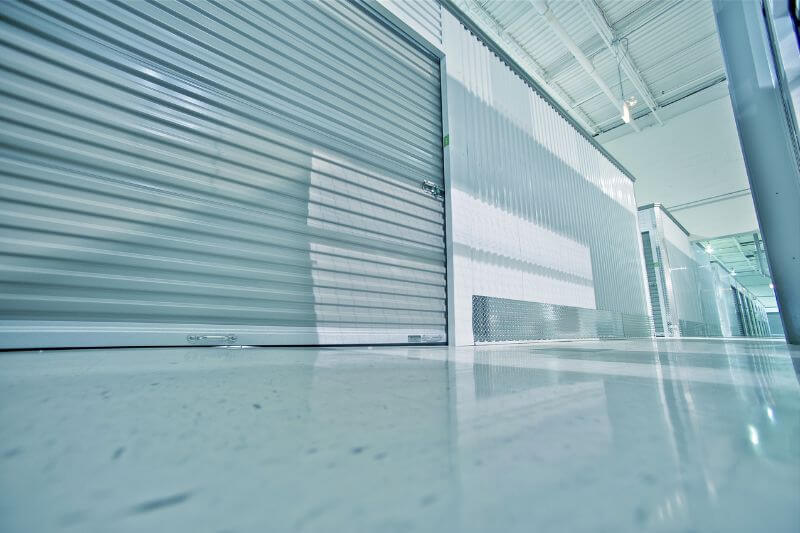
Common Misconceptions About Climate Controlled Storage
Numerous misconceptions about climate-controlled storage may lead individuals to vacillate or disregard its advantages. To assist you in making an informed decision about whether it is the appropriate choice for your storage requirements, it is important to dispel some of the most prevalent misconceptions and provide a more accurate explanation.
Climate-Controlled Storage is Only for Extreme Weather Conditions
- The Myth: Many believe climate-controlled storage is exclusively required in regions with extreme temperatures, such as those that experience frigid winters or scorching summers.
- The Facts: Although climate-controlled storage is particularly advantageous in regions with significant temperature fluctuations, it remains beneficial in more temperate climates. Even in moderate climates, sensitive objects such as electronics, furniture, photographs, and artwork can be impacted by fluctuations in temperature and humidity. The long-term injury is prevented by the consistent environment provided by climate-controlled units, irrespective of the overall climate.
Climate Control is Just About Temperature
- The Myth: Certain individuals believe that climate-controlled storage is merely a matter of regulating temperature and sufficient to sustain a cool or warm environment.
- The Facts: Climate-controlled storage encompasses both humidity and temperature regulation. Wood, leather, paper, fabrics, and electronics are highly susceptible to heat and moisture. High humidity can develop mold and mildew, while excessive heat can cause materials to warp or crack. Climate-controlled units protectively against environmental hazards by regulating both temperature and humidity.
All Storage Units in Scottsdale Are Climate-Controlled
- The Myth: It is a prevalent misconception that all storage units, particularly those in regions with extreme weather conditions, such as Scottsdale, include climate control as a standard feature.
- The Fact: Not all storage units are climate-controlled, even in humid climates. Numerous storage facilities combine climate-controlled units and conventional, non-climate-controlled units. If you require climate control for sensitive items, requesting a unit with temperature and humidity regulations is imperative. Verify this information before reserving a space.
Climate-Controlled Storage Is Much More Expensive
- The Myth: Certain individuals believe climate-controlled storage is significantly more expensive than standard storage facilities, making it a non-worthwhile investment.
- The Realities: Although climate-controlled units are generally more expensive than non-climate-controlled ones, the price disparity is frequently negligible, mainly when the protection they provide is considered. The additional expense is nominal to protect your temperature-sensitive, valuable objects. Furthermore, numerous storage facilities provide competitive pricing and discounts, making climate-controlled storage more affordable than previously believed.
You Don’t Need Climate Control for Household Items
- The Myth: It is a common misconception that household items, including apparel, books, and furniture, do not require climate-controlled storage.
- The Reality: Fluctuating temperatures and humidity can substantially impact a variety of household objects, including electronics, wooden furniture, and critical documents. For instance, the heat can cause wooden furniture to warp or fracture, while humid conditions can lead to mold or the drying out of leather items and fabrics. Climate control can preserve domestic goods’ longevity and condition.
Climate-Controlled Storage Is the Same as a Regular Storage Unit
- The Myth: It is a common misconception that climate-controlled storage is merely a marginally improved version of a standard unit, with no significant difference in safety features or construction.
- The Fact: Climate-controlled storage facilities are generally constructed to more stringent standards. In addition to offering a more consistent environment, these units offer superior protection against pests, dust, and external weather factors. They are built with sealed entrances, insulation, and specific systems for regulating temperature and humidity. The units are frequently within a temperature-regulated structure, preserving a consistent internal climate.
Short-Term Storage Does Not Require Climate-Controlled Storage
- The Myth: Certain individuals maintain that climate control is solely required for long-term storage and is superfluous for short-term requirements.
- The Fact: Climate control can be advantageous for short-term storage. Even after a few weeks or months, temperature extremes, humidity, or pests can still cause damage to items such as electronics, clothing, documents, and antiquities. Regardless of the duration of the storage space, it is advisable to consider climate control when storing sentimental or valuable items.
You Can’t Store Certain Items in Climate-Controlled Units
- The Myth: According to some individuals, certain items are prohibited from being stored in climate-controlled facilities due to the environment.
- The Reality: Most climate-controlled facilities permit a diverse array of items, such as seasonal products such as holiday decorations, electronics, antiques, furniture, and artwork. The primary restriction frequently pertains to hazardous materials or perishables (such as food), which are prohibited in storage containers for safety reasons. Nevertheless, climate-controlled units offer a secure and adaptable environment for various personal and business items.
Climate Control Will Always Protect Against Natural Disasters
- The Myth: Certain individuals believe that climate-controlled storage will safeguard their possessions from harm, including natural disasters such as fires or floods.
- The Fact: Although climate-controlled units offer exceptional protection against environmental factors such as temperature and humidity, they cannot safeguard your items from earthquakes, flooding, or fires. To guarantee that your possessions are adequately safeguarded in unforeseen circumstances, it is imperative to inquire about the facility’s insurance policies and disaster preparedness.
All Climate-Controlled Storage Units Are the Same
- The Myth: It is a common misconception that all climate-controlled units provide the same level of care and protection.
- The Fact: Not all climate-controlled units are created equal. During a visit, it is crucial to inquire about the facility’s temperature and humidity regulation systems. Some units may only regulate temperature, while others regulate both. Additionally, it is crucial to confirm the quality of the facility before storing valuable items, as some facilities may have more reliable, modern climate control systems than others.
Conclusion
Investing in a climate-controlled storage solution is prudent in Scottsdale, where the arid heat and climate can devastate sensitive possessions, including vehicles, parts, motorcycles, and plastic or metal items. These units protect your things, whether valuable collectibles, business inventory, or personal items, from temperature changes that could cause rust, plastic degradation, or other damage. A climate-controlled unit is the most effective solution for ensuring your possessions’ quality, longevity, and functionality while helping customers save money on costly repairs. Consider storage spaces that offer the best protection against extreme heat and potential costs. Don’t let Scottsdale’s climate risk your things; opt for climate-controlled storage to guarantee they remain in optimal condition year-round.
Frequently Asked Questions
Are there any alternatives to climate-controlled storage?
Regular or outdoor storage units may be selected if climate control is unnecessary. Nevertheless, climate-controlled storage is the most secure option for valuable, delicate, or sensitive items.
What are the potential consequences of failing to utilize climate-controlled stowage for sensitive items?
Without climate control, electronics, wood furniture, and critical documents are susceptible to damage from humidity, pests, mildew, or temperature fluctuations. This can lead to irreparable harm over time, rendering climate-controlled storage a worthwhile investment for preserving valuable items.
Is it essential to store commonplace household items in climate-controlled conditions?
A standard storage unit may be adequate for most routine domestic items, including non-delicate furniture, sports equipment, or seasonal clothing. Nevertheless, climate-controlled storage is advised for those storing valuable, irreplaceable, or sensitive items to prevent potential injury over time.
What sorts of climate control systems are employed in storage units?
HVAC (Heating, Ventilation, and Air Conditioning) systems typically regulate the temperature, while dehumidifiers manage humidity levels in climate-controlled storage units. The collaboration of these systems establishes a stable environment within the unit.
What is the maximum duration of storage for objects in a climate-controlled unit?
Items may be stored in a climate-controlled unit for an unlimited period. Climate-controlled facilities will safeguard your possessions for their storage, whether for a few weeks, months, or years. Regularly inspecting your items is still crucial to guarantee their continued excellent condition during long-term storage.
Is climate-controlled storage a viable solution for the preservation of wine or spirits?
Indeed, climate-controlled storage is frequently employed to preserve wine, spirits, or other collectible beverages. These units’ optimal temperature and humidity levels preserve the corks at their highest quality, preventing them from drying out or contaminating the beverage.
Can climate-controlled storage safeguard my possessions from natural disasters?
Although climate-controlled storage protects against pests, humidity, and temperature extremes, it may not adequately safeguard your possessions from catastrophic natural calamities, including earthquakes, fires, or flooding. Nevertheless, many facilities have implemented supplementary disaster preparedness measures and offer insurance options to provide additional protection.
Can live items or plants be stored in a climate-controlled storage unit?
It is generally not advisable to store live plants in a climate-controlled storage unit for extended periods, as they necessitate air circulation, water, and sunlight. Nevertheless, a climate-controlled unit can safeguard plants during a temporary relocation or transition, particularly when attempting to prevent abrupt humidity changes or temperature extremes.
How can I guarantee that my climate-controlled storage unit is adequately maintained?
When selecting a climate-controlled storage facility, inquire about the facility’s maintenance procedures. Regularly inspect the unit for leaks or other issues, and ensure that the HVAC and dehumidifier systems are verified and serviced. Additionally, it is crucial to consult reviews or request maintenance records from the facility to confirm their reliability.
What is the most effective method for preparing my items for storage in a climate-controlled unit?
To optimize the security of your possessions in climate-controlled storage, it is crucial to store them appropriately. Use breathable fabric covers for furniture, bubble wrap for fragile items, and acid-free boxes for documents and photographs. To prevent damage, it is recommended that electronics be stored in their original packaging or protected with protective cases.
Our Expert Guidance Will Help You Choose the Right Climate-Controlled Storage Solution!
At McDowell Mountain Community Storage, we know how important it is to protect sensitive items from extreme temperatures and humidity. Whether you need to store electronics, important documents, artwork, or family heirlooms, our climate-controlled units are designed to keep your items safe and well-preserved.
Our units, available in various sizes, provide a stable environment that protects your belongings from the damaging effects of fluctuating temperatures, mold, rust, and decay. Whether you’re storing seasonal items, delicate fabrics, or essential business inventory, we have a solution that fits your needs.
Our expert team is here to guide you in choosing the right unit and ensuring your items are correctly stored. Whether short-term storage during a move or long-term preservation, we offer flexible options to meet your budget and goals. Contact us today to learn more about how our climate-controlled storage solutions can protect your valuable possessions!
